Does a pretty deck with tropical leaves surrounding it seem like a great idea? Ferns can indeed go a long way in transforming the ambiance of a place.
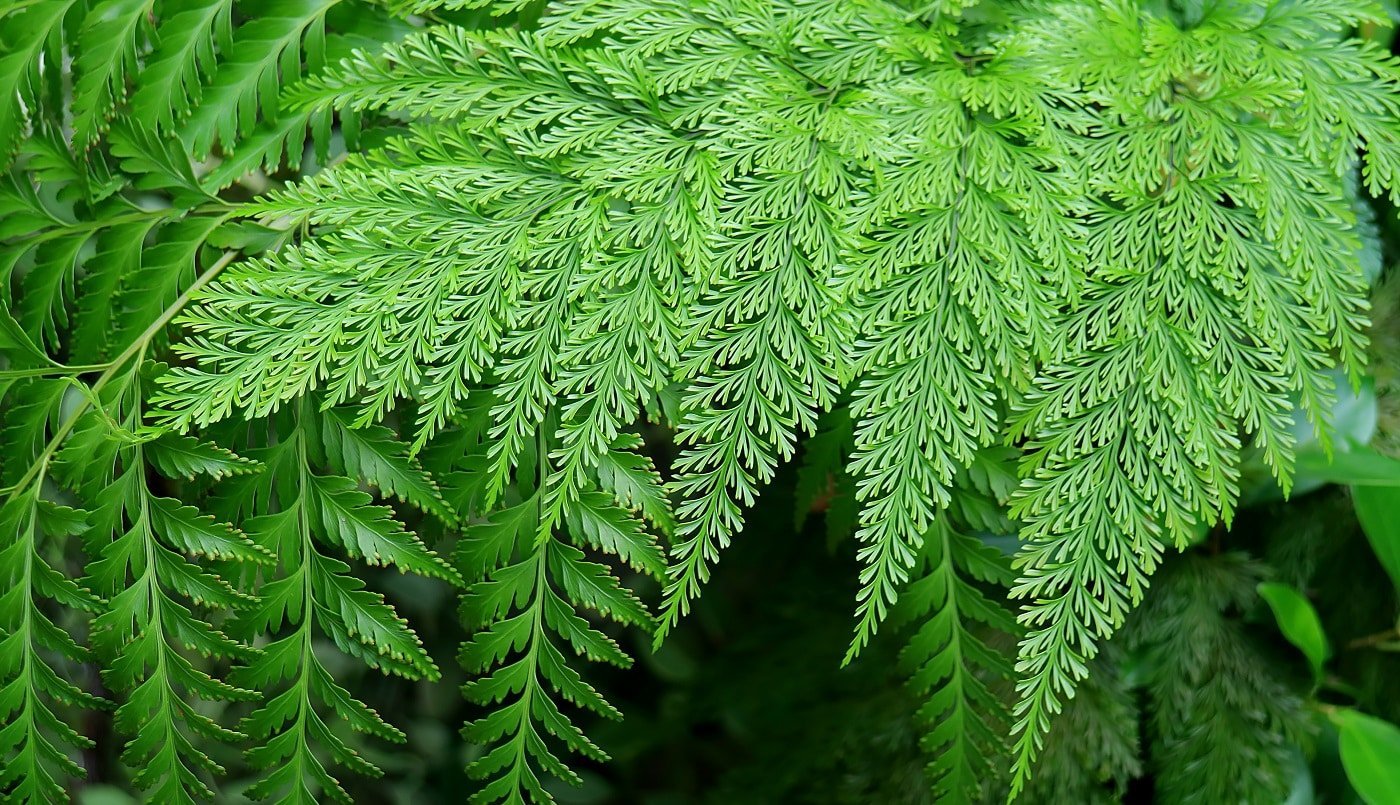
These plants can help in achieving 2 different looks, and you can either go for a rich temperate forest vibe or a very summery tropical look. Also, there are ferns with dense leaves and green fronds, which look lovely in rocky places, beside streams and ponds, and by the walkway.
Not to mention, you’ll find options with spaced-out thin leaves that will keep moving with the slightest wind and provide a very comforting tropical vibe. That said, they need varying types of soil to grow and the ideal weather conditions to survive.
To make it easier, we have discussed the top 25 types of ferns to consider for your home. Every option comes with a specific look, and you can consider them depending on the location and environmental conditions.
So, dive in!
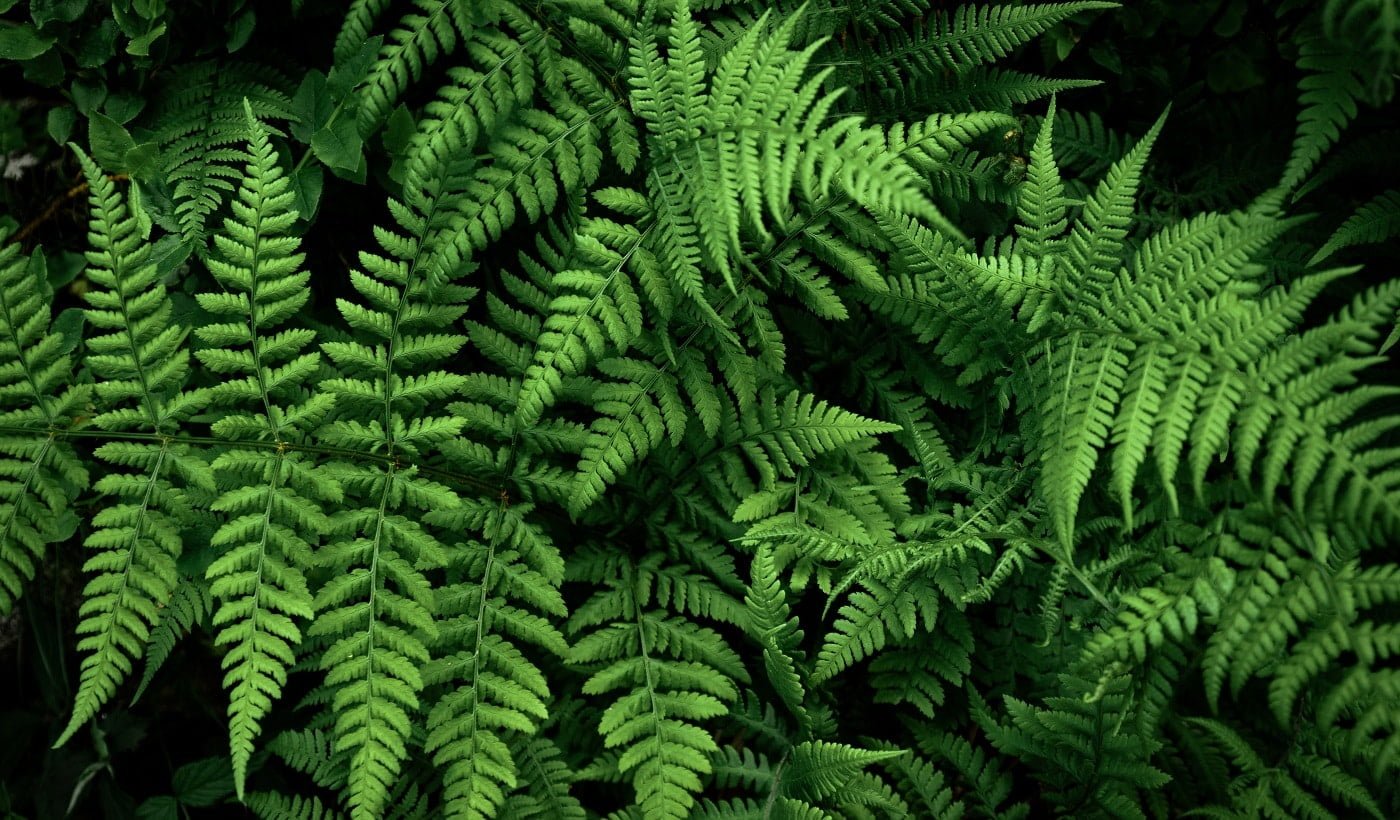
Before we begin with the types, let us take you through the major categories of ferns. These include the deciduous, evergreen, semi-evergreen, and herbaceous categories. All of the ferns will fall under either one of these categories and you can learn all about them in this section.
-
Deciduous
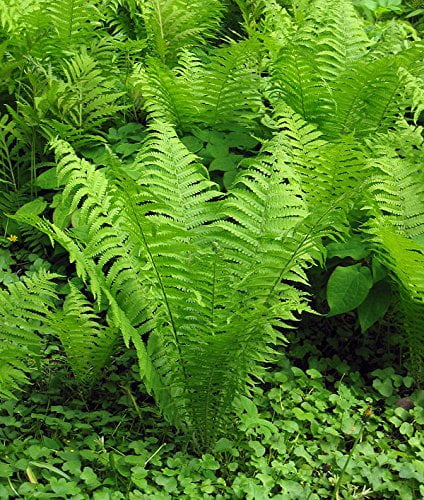
As the name suggests, deciduous ferns will be losing their leaves in winter and then growing afresh in the spring season. While they become dormant in winter, they will keep storing a lot of energy to help them survive through the year.
There are many beautiful shades of deciduous ferns available, and they can make a lovely addition to your garden or home space.
-
Evergreen
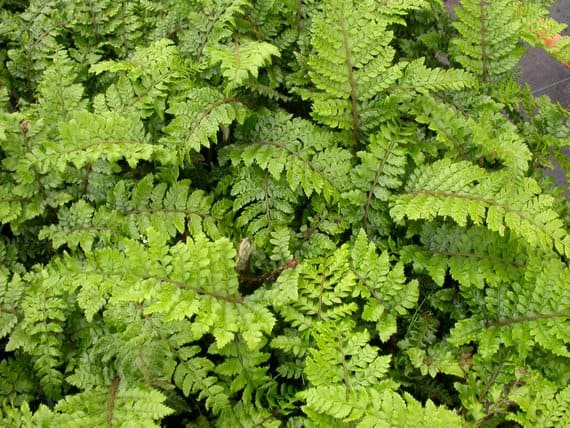
If you are a lover of nature and gardening, then winters would mostly be very disappointing as trees and plants tend to turn brown and die. Even if they do not die, they start looking dead, and that can spoil the entire ambiance in the house or garden.
However, if you plant evergreen ferns, then they will live through winter, and your garden will not be completely devoid of plants. They will not wilt or die off completely, and you can enjoy looking at them for the entire winter season.
In fact, there are such plants that can survive through snow and drought and if your area is prone to both of them, then choose wisely.
-
Semi-Evergreen
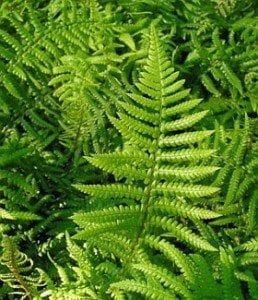
These ferns generally shed some of their leaves for a certain part of the year, and then new foliage grows back. The plants do not remain barren for a long time like deciduous trees, but they do lose their leaves for a certain amount of time in winter.
They also survive bad weather conditions, but they remain susceptible to certain insects or blizzards. This might cause them to lose their leaves, which grow back over time.
-
Herbaceous

These plants are very susceptible to weather conditions and will die off completely during the winter or late fall season. By dying, we mean that they will lose all their leaves and wilt to the ground. The problem with these ferns is that people often forget where they are planted during spring and may plant other ferns over them.
Hence, if you are choosing the herbaceous variety, then make sure that fences are planted around that will remind you of their exact position before winter comes.
Types of Ferns
-
Staghorn Fern
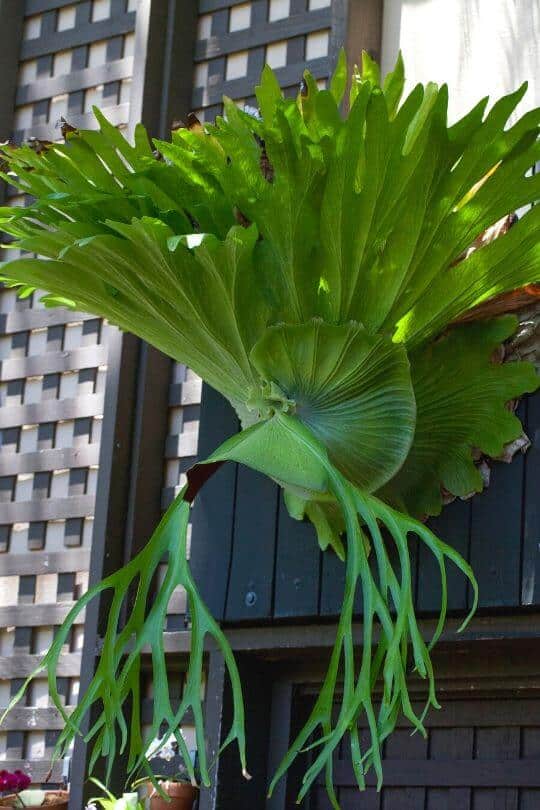
Do you wish to hang plants from a height? Then the staghorn fern or the Platycerium Spp. will be a brilliant choice to make. Its leaves are shaped like the horns of a deer, and they arch from one point in the center. So if you grow it in hanging pots and let the leaves hang freely from the top, it will look beautiful.
Plus, staghorns have a gorgeous bright green and glossy color that stands out. You can place them near entrances or around the sidewalls of your garden, and they will grow up to a height of 3 feet. Some people even grow these on their balconies, which automatically look so much prettier.
Another great advantage is that they can grow from tree barks, and you can cover holes or crevices in barks with these. They will take nutrients and water from the air itself and will grow around barks or posts. Also, these ferns can be planted in rock gardens where they will grow around the rocks adding the much-needed green color to them.
Just remember that they will grow well in partial or complete shade and hence you should stay away from planting in any area, that receives direct sunlight. They will thrive well in filtered shaded areas that receive restricted sunlight.
-
Grey Ghost Lady
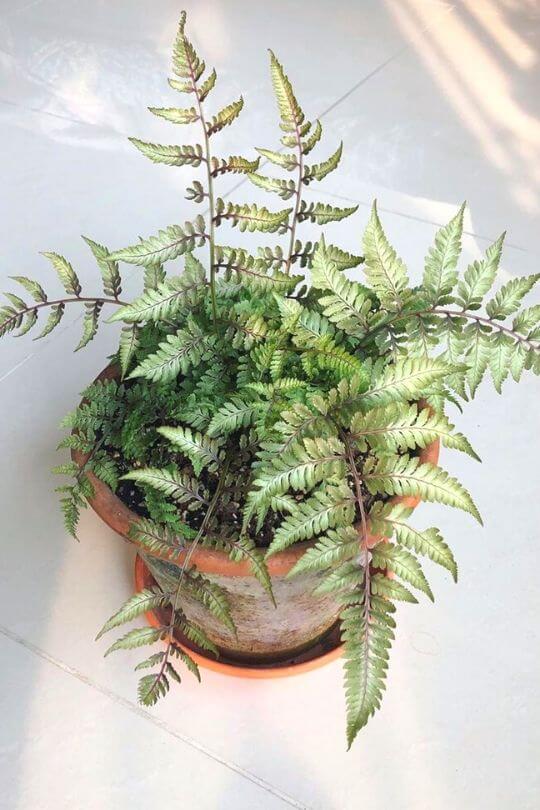
Also known as Athyrium Niponicum Grey Ghost, this fern has a silvery-white tinge to it, and that is the reason behind its name. The leaves have a very surreal color, and many say that they look like they have come from the moon.
There are ribs on the top, which make them look like shivering leaves, but they do not have a unique shape. Also, you will find tinges of reddish-purple, which make them look more beautiful.
We feel that they add glamour to any space that they are kept in, and you can keep these plants indoors as well as in your garden. They can be used around rose bushes and shrubs as they will enhance the color of the roses.
Moving on to the sun exposure needed, this fern will grow well under full or partial shade. Just ensure that you do not keep it under direct sunlight, as the leaves will then turn brown. It can be kept indoors but not in very cold spaces.
Furthermore, the average height that it reaches is around 2 to 3 feet, and hence, it looks great in hallways and can cover up any corner. You will need a neutral or acidic pH level, along with clay, loam, or sandy soil for it to grow. The soil has to be kept humid, and you will have to water it regularly.
-
Delta Maidenhair
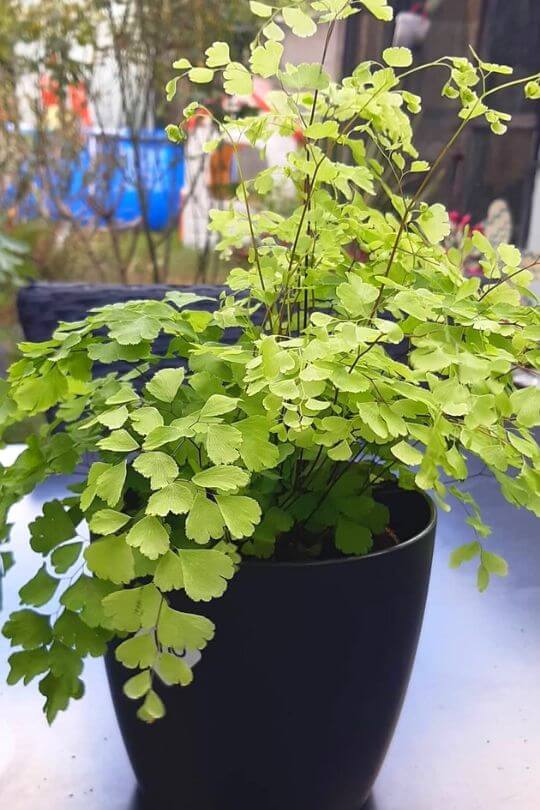
How would a charming plant with small leaves look beside your bed or by the sofa? The delta maidenhair or Adiantum Raddianum will give you a filigree texture, and it is indeed beautiful to look at.
There are purple and black stalks along with leaves that are delta-shaped. And you can grow it with tropical flowers where the green leaves will provide a great backdrop, making it stand out.
Also, these ferns look very good in hanging baskets and pots, and you can hang them around balconies and the front porch. Some even add these plants to their bookcase, tables, and near beds. Since they can survive in partial or full shade, you can easily keep them indoors.
But remember not to keep them under the sun directly as that might burn the leaves. Also, they can grow up to 24 inches and will not be very tall plants. Hence they work best when kept on desks or on some kind of elevated surface.
Moving on to the type of soil, this plant grows in fertile soil, which has to be well-drained and humid.
-
Hart’s Tongue Fern
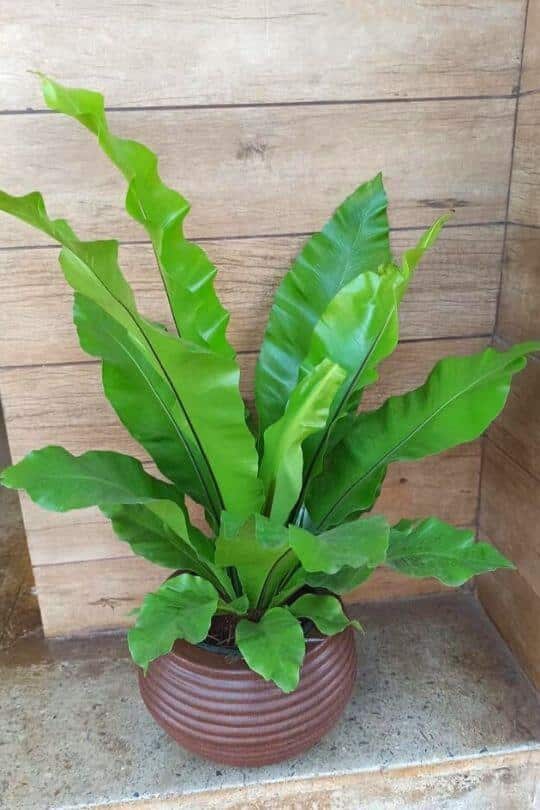
If you are looking for some exotic-looking ferns for your house, then hart’s tongue or the Asplenium Scolopendrium will work out very well. They can be planted in both tropical and temperate zones and will look good in boho-themed houses. The leaves are bright green and will remind one of the spring seasons.
Plus, the fronds are glossy and look exotic while forming a rosette-like structure with leaves arching on all sides. They are frilled or divided and face upwards, making a beautiful pattern.
The fern gives off a very tropical vibe and will enhance the decor of your patio or roof. Pair it up with fancy swing seats and boho-themed tables, and you have a beautiful place to relax in the evening.
Coming to the exposure, Hart’s Tongue variety will grow well in both full and partial shade and can grow up to a height of 1 to 2 feet. Hence, a lot of pruning will not be necessary as it does not grow any higher than that.
Moreover, a great factor here is that this plant can adapt to most varieties of soil, and you can grow it in neutral and alkaline soil. The soil could be chalky, sandy, loamy, or contain clay, and as long as you keep it moist, the fern will grow well in it.
-
Kangaroo Fern

By now, you realize that ferns can come in multiple shapes and sizes. Here is another variety called the Microrosum Diversifoliun or the kangaroo fern, which consists of tongue-like leaves that point upwards and spread across an area. They look exotic and are found in a very deep shade of green.
Furthermore, the leaves are glossy and will look beautiful in any tropical or boho-themed setting. They will not grow beyond 1 foot in height, but they can spread over 2 to 3 feet. You will need well-drained neutral, acidic, or loam soil.
Also, like all the other ferns that we have discussed till now, this one needs partial or complete shade to grow.
-
Painted Lady
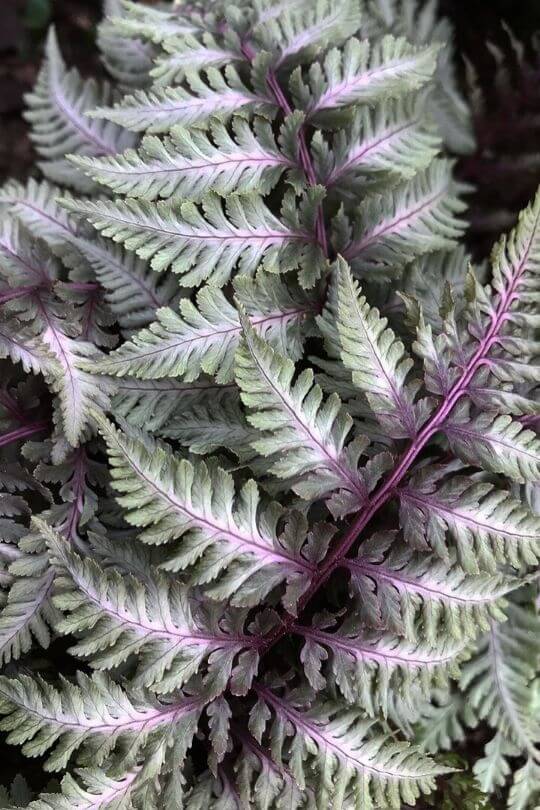
The painted lady looks a lot similar to the silver-gray fern, but its fronds here are a deep shade of burgundy purple. Also known as the Athyrium Niponicum Var. Pictum ‘Burgundy Lace’, can change colors as it grows bigger. And you will notice shades of green and silver taking over while newer purple burgundy shoots grow on top.
Moving on to the location, this plant will look and grow well beside ponds and lakes. If you have a small pond in the backyard, consider surrounding it with this type. It has a beautiful palette of colors that will keep changing over time, creating lovely borders. Plus, you can also use it around shrubs and rose bushes as it will only grow up to 2 feet tall.
Plus, you can keep it in the partial and full shade when required, and it is best to avoid direct sun rays. Keep it in the house or outside and ensure you get neutral or acidic soil that is well-drained. Sandy soil, loam, and clay are all good for this variety of fern, and you can easily use them.
-
Hen And Chickens Fern
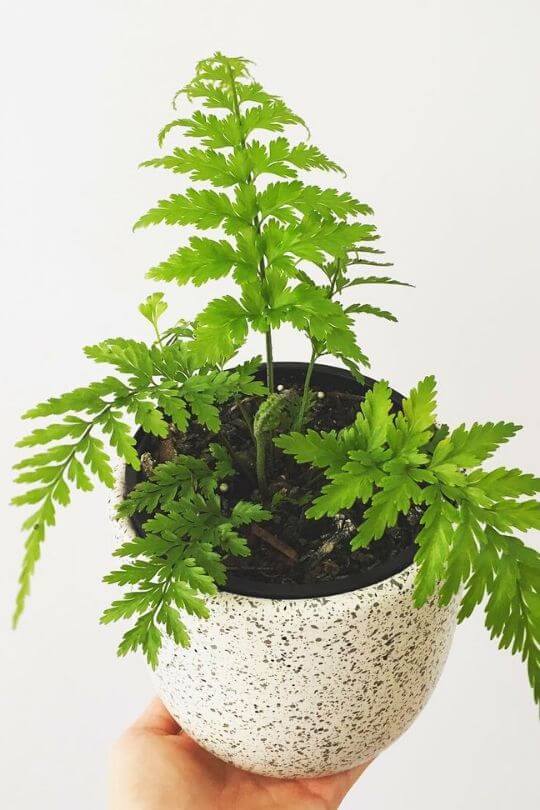
What are your thoughts about keeping a mini pine tree in the house? Yes, the hen and chicken fern or the Asplenium Bulbiferum will give you a very similar effect with light green fronds, which arch gracefully on all sides. You will find thin needle-like leaves, which are small and extend beautifully, reminding one of the pine trees.
If you want to plant outdoors, then the hen and chicken ferns can be used to create beautiful underbrush for flower beds. They have a rich and lush coverage and can also be kept on patios and terraces. You will need partial shade for them to grow well, and it is best to keep them in an area that receives filtered sunlight.
These ferns can grow up to a height of 4 feet, and you can use well-drained soil for them. They can be grown on most kinds of soil, including chalk, loam, clay, alkaline, acidic, and neutral.
-
Crocodile Fern

It is time for you to meet this unique-looking plant, which is also known as the Microsorum Musifolium ‘Crocodyllus’. The leaves look like crocodile skin, and that gives the fern a very exotic touch. The fronds are light green in color and have fleshy leaves, which are glossy and will catch the eye of your guests.
Moreover, this is an epiphyte, and you can grow it in barks of trees and trunks as well as on walls. The ferns grow best in partial sunlight, and you can place them on walls with trees on top. Also, the maximum height that this fern can grow up to is 2 to 5 feet, and you will need perlite or peat moss for it.
-
Bird’s Nest
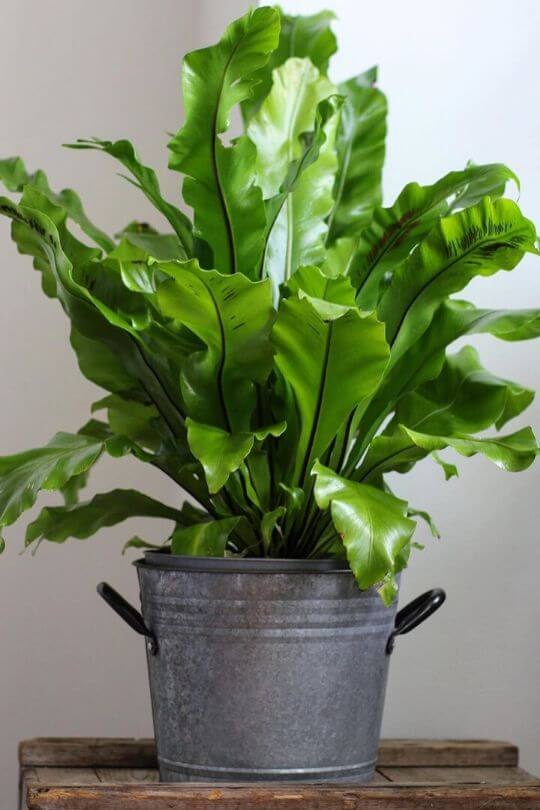
Up next is the bird’s nest fern or Asplenium Nidus, which has tongue-shaped leaves that curl slightly on the top. These ferns look very strong and have glossy green bodies, which are attractive. Also, they grow upwards from a middle point and then bunch together, looking like a nest.
Moving on, this plant grows very well in baskets, containers, or hanging pots. You will need sandy soil or loam for this, which has to be neutral or acidic. It will need regular watering and can grow up to a height of 4 to 5 feet, making it one of the taller varieties.
-
Holly Fern
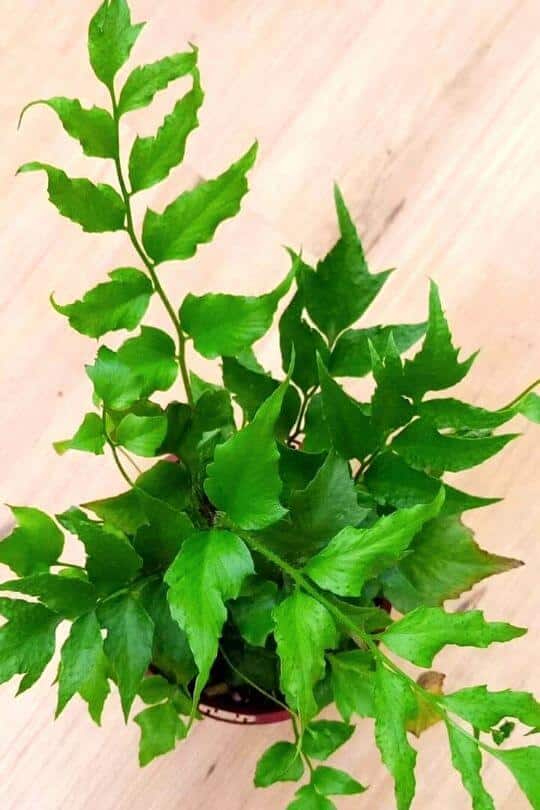
If you are looking for a deeper green shade, then the holly fern or the Cyrtomium falcatum will work very well. It has glossy light green leaves, which come with a waxy texture. They can be planted both indoors and outdoors and will grow well in both temperate and tropical climates.
Many use it to highlight outdoor architecture, and it can bring out the colors of your walls better. This plant would give you a very countryside cottage feel to your front garden and can grow up to a height of 2 feet.
Plus, they grow well in moist soil with a lot of organic substances. The soil has to be well-drained and can be neutral or acidic depending upon the area that you live in.
-
Eagle Fern

This plant is part of the palate in East Asia and is known for its triangular-shaped fronds, which are divided. The eagle fern or the Pteridium Aquilinum is not a very popular plant but works as a great addition to surrounding bushes and flowering beds.
These ferns belong to the deciduous category and are best grown outside the house. They can grow to be very large and hence can cover up bare spaces around the house if you have any.
The best part about this fern is that it can grow in full sunlight and semi-shaded areas. The maximum height will be around 4 to 6 feet, and you can grow it in fields and farms too. Moving on to the type of soil, this one needs clay, sandy soil, or loam, which is neutral or acidic. You will need to water regularly and ensure that it is well-drained.
-
Giant Wood

How about some pastel green leaves with a drop of yellow in them? Yes, the giant wood or the Dryopteris Goldiana will give you that exact tropical vibe with beautiful large leaves spreading across 6 feet when fully grown. It has divided fronds with a rosette in the middle and leaves on all sides. We love the texture, and the fern can be used as a backdrop for your gardens.
Moving on, these plants grow well in partial shade or complete shade, and you will need well-drained and humid soil for them to grow well. They can adjust to almost any kind of soil and will grow well in chalk, clay, loam, and sandy soil.
-
Asparagus Fern
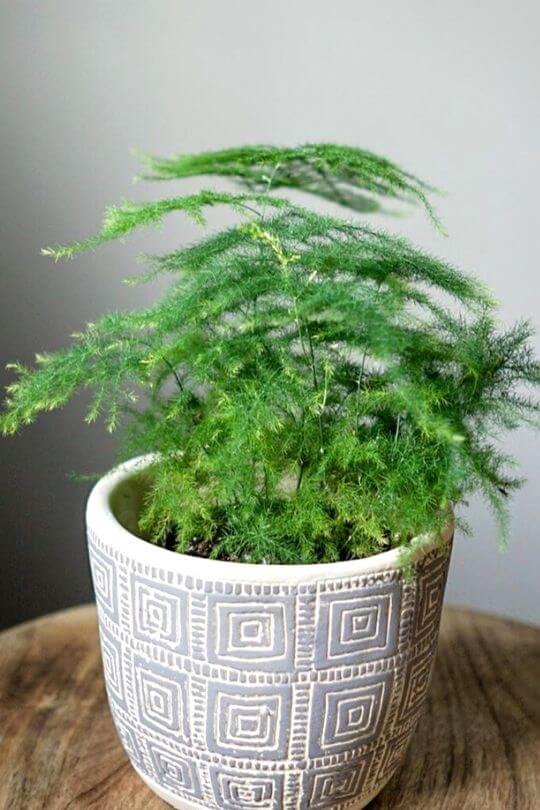
While botanists, in general, do not consider this to be a fern, you will be surprised at how beautiful it looks, and people often use it as a fern. The Asparagus Aethiopicus looks perfectly like one with needle-like leaves along with long branches. The branches arch beautifully, and its light green small leaves provide a very beautiful appearance.
We will recommend these plants in houses with a minimalist theme as they would add the much-needed green touch to it. Also, they grow very well outside houses and in between rocks. If you have a rocky pond or a fountain, this can be used to provide a Mediterranean vibe to it.
Next, this is a very adaptable fern and can grow in full sunlight, and partial or complete shade. You can keep them in the corners of your outside walls to hide them, and they will look beautiful. Just remember that you will need well-drained soil with a lot of organic matter for it to survive well.
-
Maidenhair Spleenwort
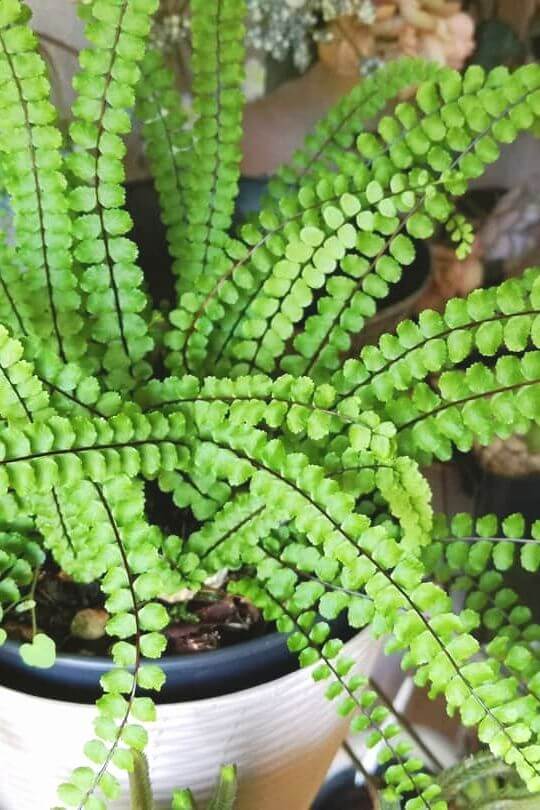
Up next is a lovely addition to rocky places, and you will love the small light green shiny leaves. The Maidenhair Sleepwort or the Asplenium Trichomanes has a dark stem with leaves on both sides of it. They are spaced out and have a rounded shape, which makes them look like fairy ladders, as many would call them.
Moreover, we found this to be a very adorable fern type that can accompany rose bushes too. They grow well in full and partial shade and can only grow up to 5 to 6 inches in height. You will also be able to grow it in all kinds of soil, but it needs to be well-drained and moist.
-
Rabbit’s Foot
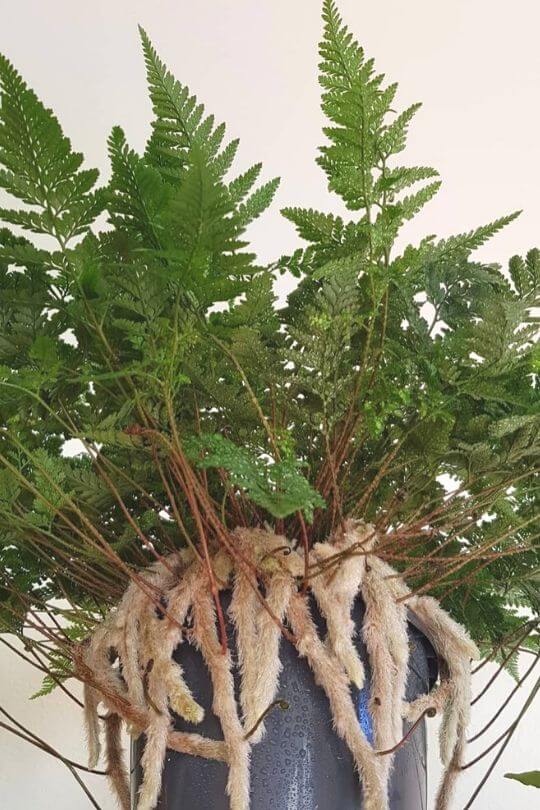
As the name reads, this one has rhizomes growing out from the sides that look like rabbits’ paws. Yes, while it may be hard to believe, the Davallia Fejeensis also has thick fronds, which are divided into segments. It grows perfectly well in small areas, containers, pots, and between stones.
Moreover, the rhizomes will cover the surrounding area and will look beautiful against walls, stones, and bricks. They can grow up to a height of 1 to 3 feet, and you will need full or partial shade for them. One can grow this plant in well-drained soil or a growing medium with a neutral pH level.
-
Northern Maidenhair
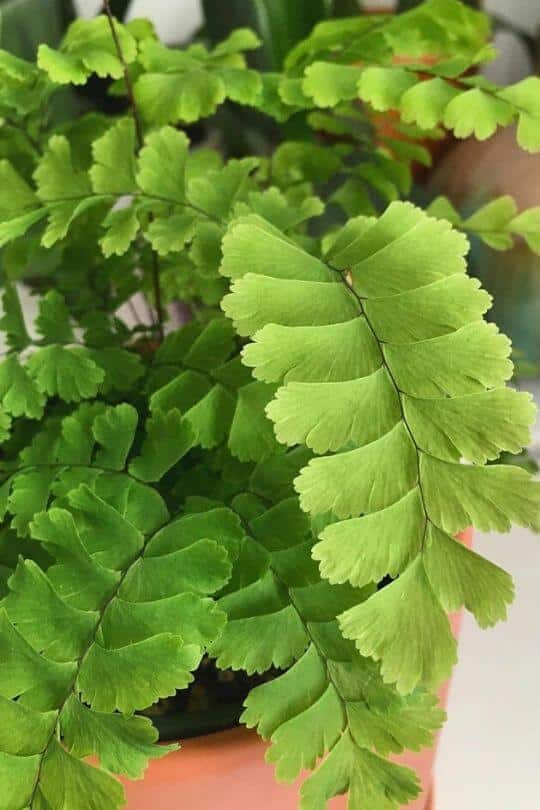
Do you want to cover up crevices in the outer wall of the house? Then the Adiantum Pedatum may be exactly what you are searching for. It can grow up to 1 to 3 feet and has an attractive pea-green color.
The leaves are glossy and have a thin black stem that holds them together. They look beautiful in light and dark areas, and you can keep them in hanging baskets too. Just remember that these will not grow well in direct sunlight, and it is best to keep the plant under shade.
Moving on to the soil, this is another adaptable variety that grows well in all kinds of well-drained and moist soil. Remember to water it daily, and you should not have any further problems.
-
Australian Tree
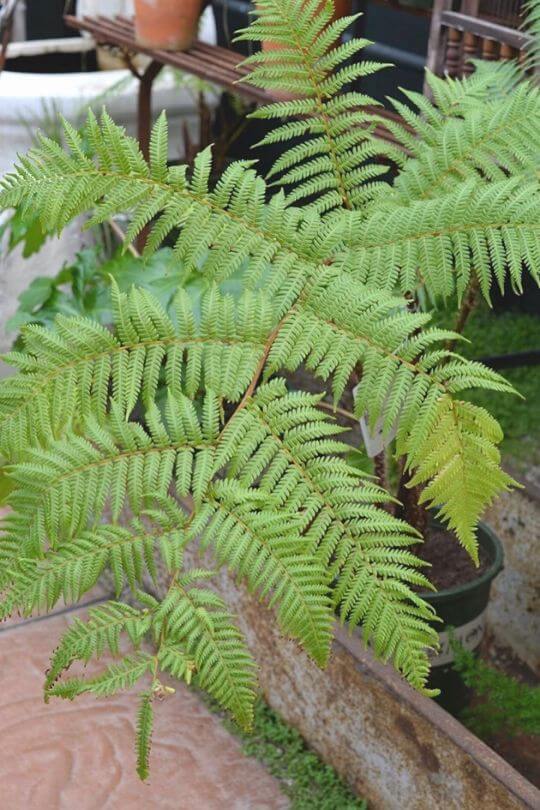
What are your thoughts about bringing a part of the forest you saw in Jurassic Park home? Yes, the Australian tree fern or Sphaeropteris Cooperiexactly looks like those trees that you have seen in the film and is loved by several people.
There is a brown trunk with arching fronds on all sides, and a rosette remains in the center. It is wide and comes with light green and shiny leaves that add to the tropical forest vibe. But the only catch here is that the leaves can make your skin itch if you touch them. Hence, they are best used outdoors and should be grown in the corners.
Moreover, these ferns can grow well in complete sunlight as well as in partial shade. They can reach a height of 30 feet and can be used to cover up unattractive wall fronts. You will need rich and acidic soil, which is well-drained. It has to be sandy loam or loam, and you have to water it regularly.
-
Southern Maidenhair
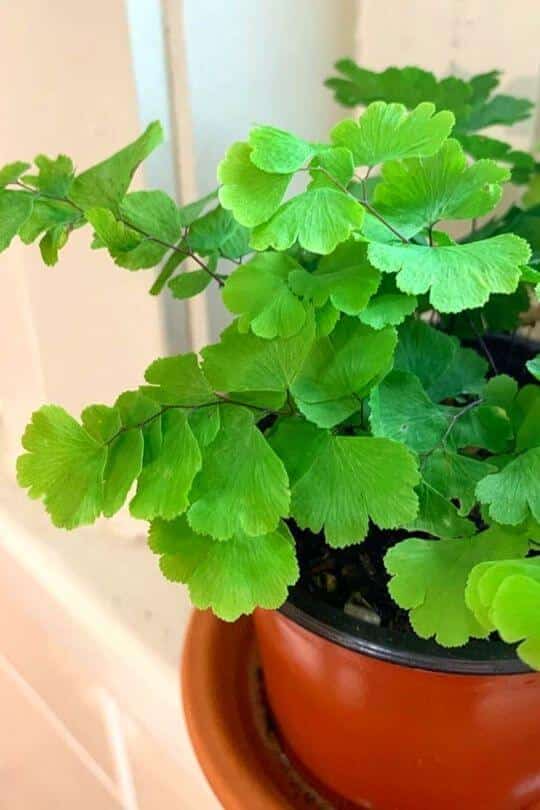
Adiantum Calillus-Veneris stands for ‘hair of Venus’ because of the shape of its fronds and the way they divide into frilled leaflets. The fronds have a beautiful light green shade that complements the very dark blue stem, and together, they look gorgeous.
Plus, these ferns can be grown in multiple ways, and you can try growing them in baskets, hanging pots, trunks of trees, and between bricks. They will immediately cover the area well because of their thick growth and will make the area look good.
The only requirements here are a partially or fully shaded area and well-drained and humid soil. This fern can grow in sandy soil, clay, chalky, or loam, and all you need to do is water it daily.
-
Lacy Tree

Do you wish to get a palm-like fern tree that will give you an Australian forest vibe? The Cyathea Cooper is another beautiful tree that looks like the ones in Jurassic Park. It will give your home a very tropical Australian vibe with its brown trunk along with arching fronds.
The fronds are large and wide and give way to smaller fronds. They will look beautiful as a centerpiece in your garden, and you can surround them with smaller shrubs and bushes.
And the best part about this type is that it can grow very quickly and it increases by several feet every year. One can grow it up to 15 to 20 feet tall, or one can trim it to reach the desired height. All you will need is rich, well-drained soil, which is either sandy loam or loam with acidic or neutral pH levels.
-
Cinnamon Fern
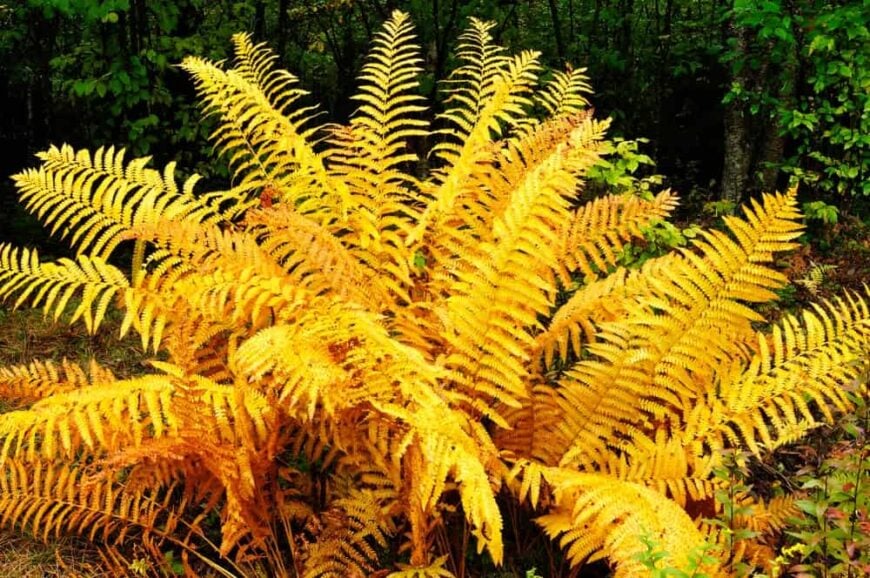
Do you want to add a cinnamon-colored plant to your backyard? The cinnamon fern will help in achieving a multidimensional feel with cinnamon-colored fronds inside and green-colored ones on the outside. The inside ones are fertile, while the green ones on its sides are sterile. These ferns can be planted around the walls to provide a great backdrop for your other flowering plants.
Also, they can grow up to a height of 4 feet, and it is best to plant them apart. This needs to be done so that they can freely spread over a large area, without the leaves overlapping at all.
-
Hard Fern
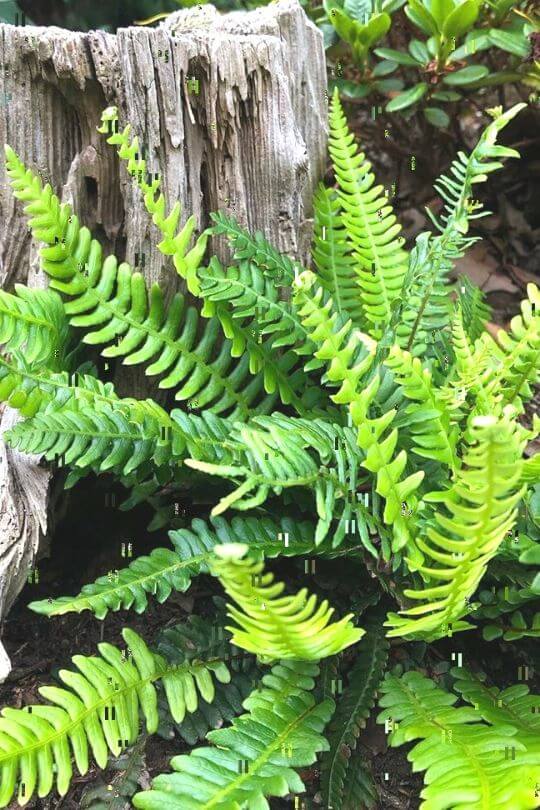
Next, we have the hard fern or the Blecchum Spicant, which has very uniquely shaped perpendicular fronds that grow from one central stem. It looks like a tongue that has been cut into smaller strips, and there is a rosette in the center to complete the look.
These plants can grow in full or partial shade, and you will not need to water them daily. They can grow in poorly drained soil, but a well-drained one is preferred. The maximum height that they can reach is between 1 to 2 feet, and they can be placed around rose bushes and shrubs. These can also be grown in pots, vases, or containers and placed inside the house.
We will recommend planting this outdoors under some form of shade. Since these grow to cover a larger area, it is best to grow them in your backyard or keep them in pots on the front deck.
-
Ostrich Fern

Ostrich ferns can be used to create beautiful backdrops for flowering plants, and they are often used beside the sidewalls of the house. These can grow up to 6 feet, and the tall fronds look like the feathers of an ostrich. They can be used around sidewalls to hide ugly or discolored walls. The leaves and fronds grow in large bunches and can fill up the entire space.
There are smaller fronds in the middle, which will survive through winter while the larger ones on their sides die off. The fronds grow in large clumps, and they arch beautifully on the sides. The light green ostrich tail-like leaves stand out and will look great in tropical-themed gardens.
Moving on to the humidity level needed, this fern is best grown outdoors where it can get the right amount of humidity. Plus, some people add it to their palate when there is a special dinner planned in the house.
-
Royal Fern
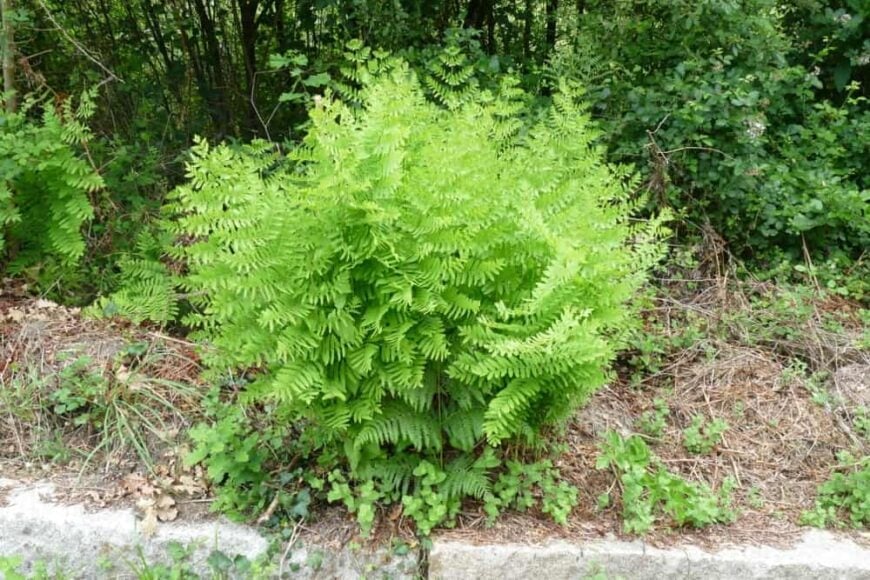
Do you have problems with deer and rabbits eating up plants in the backyard? Then the royal fern is going to be an excellent option as it is very resistant to animals and is generally not eaten by them. Plus, they can grow up to a height of 6 feet, and the leaves grow in bunches.
The only thing that you need to consider here is the space available because this option requires a lot of space to grow. If they are cramped into a small space, the plants will not be healthy and will not grow well.
Also, keep pruning all the brown leaves and ensure the soil is very moist even during dry seasons. Plus, make sure that it is grown under complete or partial shade as direct sunlight can cause the browning of leaves.
-
Japanese Painted Fern
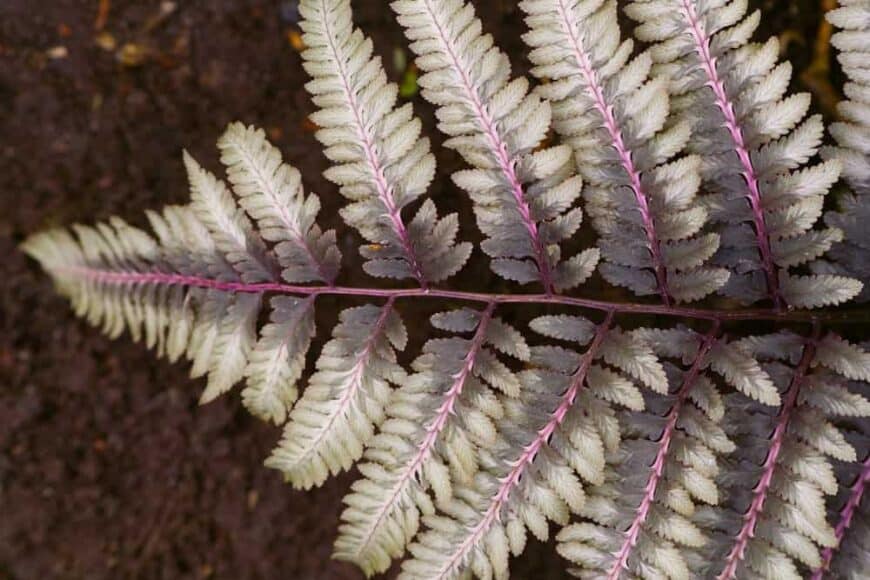
If you want something unique in the house, then this fern can be a great showstopper with its silvery leaves and bluish-red steam. The silvery fronds arch gracefully and are bound to catch the attention of your guests.
Now, these plants need to be kept under the sun or in partial shade where they get the benefits of sunlight. It is best to use rich soil to grow, but in case you do not have it, make sure that the soil is well-fertilized. Keep adding compost to the soil so that the nutrient level stays high and your plant will grow very well.
-
Cretan Brake Fern
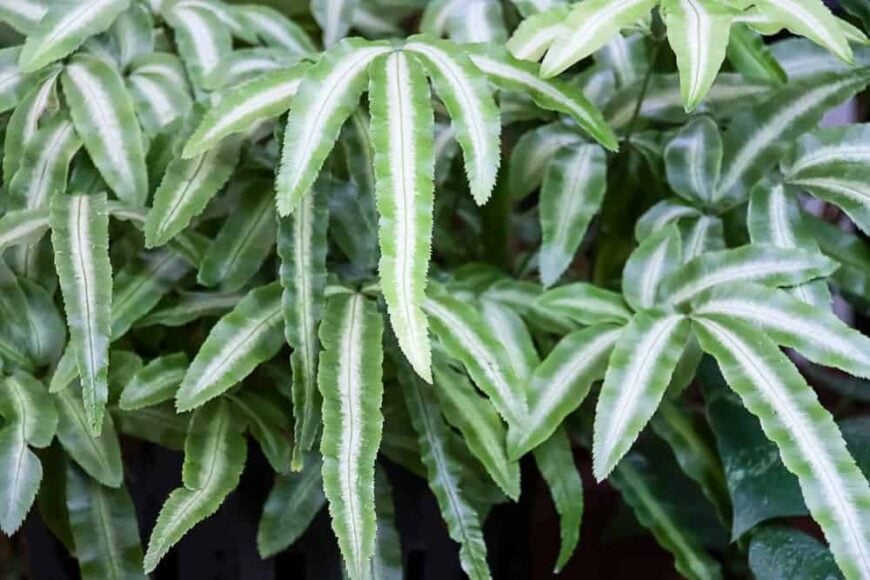
Cretan Brake fern is a very popular type of house fern that is used especially because of its beautiful leaves that have unique shapes. They also hang in a certain way that looks attractive and draws the attention of people. We can compare it with a palm tree, which also has a central stem and stalks growing around.
Adding on, you will need very humid soil to grow this, and it is best to chop off fronds near the bottom so that you can control the growth. But in general, this does not take a lot of care, and you will just have to keep watering it once in a while.
Where Can Ferns Be Located?
You can either place ferns inside or outside your homes and in this section, we have discussed both options.
Outdoors
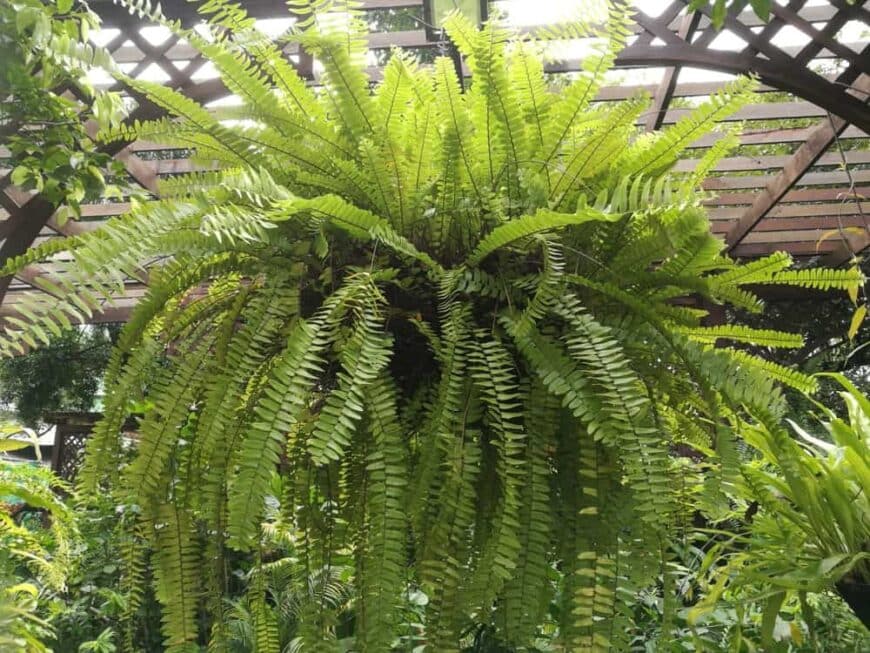
Ferns can add that much-needed touch of nature to your backyard or front yard, but you will need to take proper care of it. There might be a lot of ferns growing around in the wild, and you might want to transplant some from the streets to your home.
But remember, if you do not follow all the rules, then the plant could die after being replanted in your yard. But once the ferns start growing, you do not have to take a lot of care of them. They need a lot of initial care and a bit of work in the beginning, and it is best if you select the space beforehand.
Check the kind of soil that your fern needs and ensure your garden has it. Some would be able to live on rocky and acidic soil, while others can live without water for a few days. But if you are not leaving for a business trip or vacation, ensure that you water regularly and add fertilizers and compost when necessary.
Also, when they grow bigger than required, immediately cut and divide them. You can replant the extra bits and have them growing in another part of your garden. There is a risk that the plants may take over your garden if this is not done.
Indoors
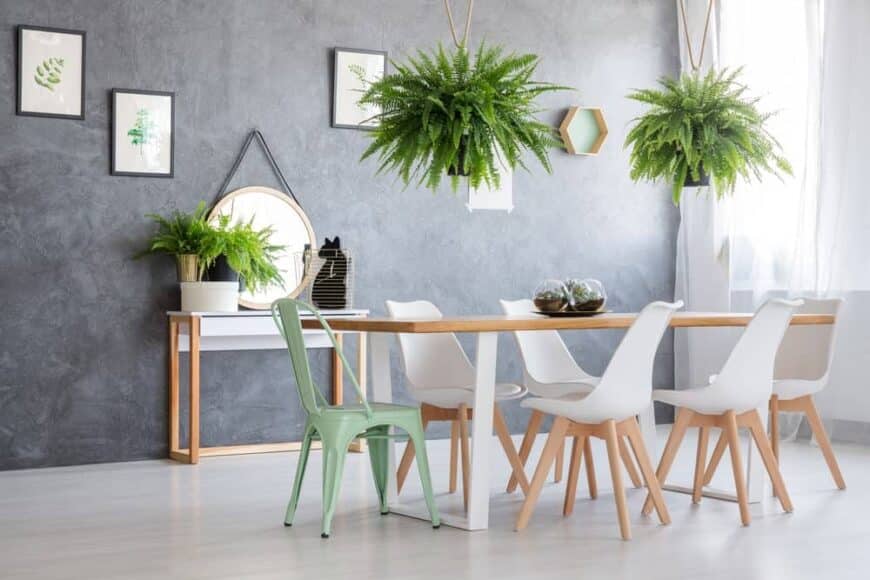
Ferns thrive well in a tropical climate and need occasional water and care to grow. However, you can grow them very well inside your house, and they will add to the aesthetics of the room. They will remain healthy and grow well for a long time if you take care of them in the right way.
Here, please know that ferns are not very difficult to grow and are pretty low maintenance. You will just have to follow a few instructions, and it will work out. For example, they do not grow well in very low temperatures, and hence, it is best not to keep them in an air-conditioned room for days.
Take them out and keep them in an area where the temperature is around 65-75 degrees Fahrenheit. Since these are tropical plants, they will need a semi-hot and humid climate to grow in. So, you can try keeping them in a plastic pot that retains more moisture than a clay one.
Next, it is best not to keep the plant under complete sunlight as it might burn some of the leaves. Instead, try to ensure that it receives indirect sunlight so that it can get all the energy that is needed without burning.
Also, if you notice damaged or dead leaves or parts, prune them as soon as you can. The damage can be due to direct sunlight or pest infestation. If there is an infestation, approach the problem immediately and remove them. Then fertilize your plant well and keep a close watch until it starts growing normally.

If you have ever considered ferns to be boring plants, this list should have been able to change your mind about it. The unique names and exotic shapes make these options stand out. Also, with the number of colors and shades that are available, we can understand the confusion that can occur while choosing.
But remember to check the soil type and the maximum height that a fern can grow to before buying it. You would not want to bring one home and then watch it die because the soil wasn’t suitable for it.
What’s more, pay attention to the amount of care that is needed. Some plants can grow in poorly drained soil, while others would need well-drained but moist soil.
With this, we have reached the end of our guide, and it is time to say goodbye. Let us know about the kind of garden you have created with ferns in the comment section below.
That’s all, folks.
